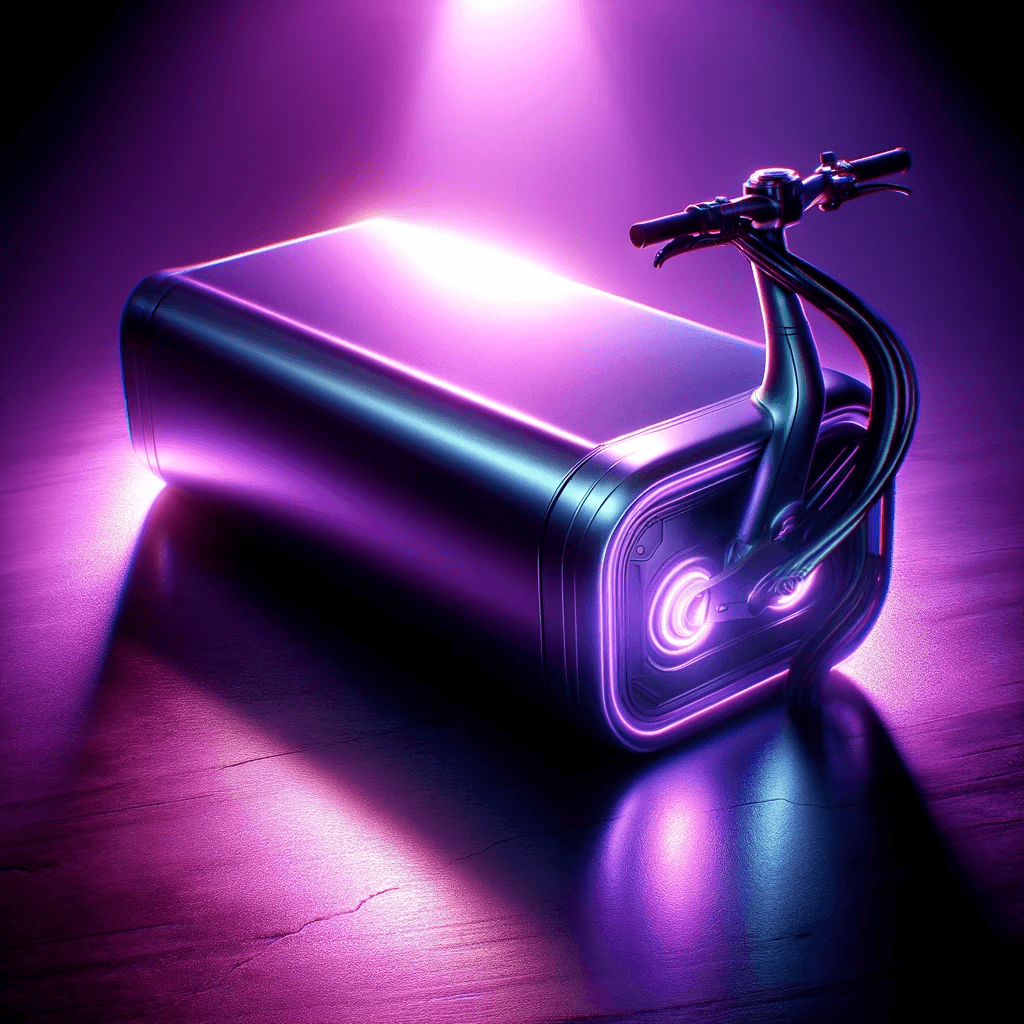
Leaving your e-bike outside requires some planning to protect it from the elements and potential theft. Continuous exposure to sun, rain, and temperature fluctuations can accelerate rust and potentially damage sensitive components like the motor and controller. Furthermore, lithium-ion batteries have specific temperature and storage requirements to maximize their lifespan. Proper preparation can mitigate these risks. (For general tips on e-bike upkeep, you can browse maintenance guides on ebicycles.ai: Maintenance Articles).
1. Understand Your E-Bike’s Water-Resistance (IP) Rating
The Ingress Protection (IP) rating tells you how resistant your e-bike's components are to dust and water. Knowing your bike's rating helps determine the necessary level of protection. (A brief mention of IP ratings in relation to riding in rain can be found in this article: Top 10 Questions About E-Bikes, Answered).
- IPX4:
- Meaning: Splash-proof
- OK in Heavy Rain?: Yes
- Hose/Pressure-Wash?: No
- Typical on E-Bikes: Entry-level hub drives (Source: Reddit)
- IPX5:
- Meaning: Sustained low-pressure jets
- OK in Heavy Rain?: Yes
- Hose/Pressure-Wash?: Light rinse recommended
- Typical on E-Bikes: Mid-range Bosch/Brose systems (Source: Velotric)
- IPX7:
- Meaning: 1m submersion (up to 30 min)
- OK in Heavy Rain?: Yes
- Hose/Pressure-Wash?: Yes
- Typical on E-Bikes: Premium batteries & controllers
Key Takeaway: E-bikes with ratings below IPX4 should always be covered when stored outside. Even components rated IPX5 or higher should never be subjected to high-pressure washing. (Source: Velotric)
2. Outdoor Storage Best Practices
(For comprehensive guides on long-term or seasonal e-bike storage, covering cleaning, battery care, and environment, see this article: Why Winter Storage Matters for E-Bikes).
2.1 Choose a Sheltered, Lockable Spot
- Storing your e-bike under a roof overhang, carport, or covered porch significantly reduces UV exposure (by ~70%) and allows a cover to breathe, preventing moisture buildup.
- Always lock your bike securely through the frame and both wheels, even at home, to deter theft. (You might find articles on e-bike locking techniques and security on ebicycles.ai).
2.2 Use a Purpose-Built Waterproof Cover
A good cover is essential for outdoor storage. Look for breathable, UV-resistant, and waterproof materials. (While specific cover reviews weren't found in the search, ebicycles.ai might offer buying guides).
Recommended Covers (2025 Picks): (Source: Bicycling)
- Team Obsidian Waterproof:
- Sizes: XL–XXL
- Features: 210D rip-stop, front/back lock holes
- Price: ~$43
- Comnova 600D Oxford:
- Sizes: L–XXL
- Features: Five wind-straps, taped seams
- Price: ~$50
- Bakcou Heavy-Duty:
- Size: One size
- Features: Elastic skirt + buckle, wind-rated
- Price: ~$55
Pro Tip: Slip short sections of pool noodles over the ends of your pedals before covering to prevent abrasion and tearing of the cover fabric.
2.3 Weekly TLC
- Wipe down the frame and battery contacts with a microfiber cloth, especially after wet rides.
- Re-lubricate the chain after riding in the rain. Use a "wet" chain lube suitable for damp conditions. (Source: Park Tool) (Basic chain care is mentioned in this maintenance article: E-Bike Maintenance After 100 Miles).
- Regularly inspect bolt heads, the kickstand plate, and other metal parts for any signs of rust.
2.4 Elevate the Tires
Placing your e-bike on a rubber mat, wooden pallet, or bike stand keeps the tires out of puddles and off damp ground, which helps slow down sidewall cracking and prevents moisture absorption.
3. Battery Care Cheat-Sheet
The battery is often the most expensive component. Proper care is crucial, especially when storing the bike outdoors. (This article provides essential tips for battery storage, particularly in colder weather: How to Store Your E-Bike Battery in Winter).
- Store the battery indoors if parking the bike outside for more than 24 hours.
- Why: Eliminates exposure to extreme temperatures and reduces theft risk.
- Source: Rad Power Bikes, Trek Bikes, ebicycles.ai Winter Storage
- Aim for a 40–60% State of Charge (SoC) if storing the battery for more than 1 week.
- Why: Cuts long-term capacity loss significantly compared to storing at 100%.
- Source: Battery University, Reddit, ebicycles.ai Battery Storage
- Store the battery in an ideal temperature range of 50–77°F (10–25°C).
- Why: Chemical aging process slows down considerably in this range. (The ebicycles.ai article recommends 10-20°C / 50-68°F: ebicycles.ai Battery Storage).
- Source: Battery University
- Top-up the battery charge check periodically (e.g., monthly or per manufacturer recommendation, aim to keep within 40-60% range).
- Why: Prevents the battery from deep discharging and entering a protective "sleep mode".
- Source: Battery University, ebicycles.ai Battery Storage (mentions monthly checks)
- Use only UL 2849-certified batteries and chargers.
- Why: Minimizes fire risk associated with lithium-ion batteries.
- Source: UL Solutions, PeopleForBikes
- Avoid charging the battery below 32°F (0°C) or above 104°F (40°C).
- Why: The Battery Management System (BMS) may prevent charging or charging in these conditions can damage battery cells.
- Source: Battery University
⚠️ Safety First: If a battery appears swollen, has been submerged in water, or was significantly dropped, do not bring it indoors or charge it. Isolate it safely outside (e.g., in a metal box away from flammable materials) and contact your dealer or a battery recycling facility immediately. (Source: PeopleForBikes)
4. Riding & Washing in the Rain
- Most e-bikes rated IPX4 or higher can handle riding in steady rain. Avoid submerging the hub motor or battery by riding through deep puddles. (Source: Reddit, ebicycles.ai Top 10 Questions)
- Skip pressure washers. Use a gentle spray from a garden hose. Keep the bike upright during washing. (A specific article on washing wasn't found in the search, but general cleaning is mentioned in the Winter Storage article).
- It's good practice to remove the battery before washing. Always dry the battery contacts thoroughly before reinstalling it. (Source: Velotric)
- After riding or washing in wet conditions, vent your bike cover (unzip or lift it) for about 15 minutes before sealing it up to allow trapped humidity to escape.
5. Frequently Asked Questions
- Q: Can I leave an e-bike outside overnight with no cover?
- A: Not recommended, especially in humid areas or if rain is expected. Repeated dew cycles can corrode electronics over time. A cover is a small investment compared to replacing a controller or motor.
- Q: Will water damage void my warranty?
- A: Most warranties cover incidental rain exposure on appropriately IP-rated bikes but exclude damage from neglect (like leaving it uncovered in storms) or improper washing (pressure washing). Check your specific warranty details.
- Q: Is storing the bike in a shed that goes below freezing OK?
- A: Yes, storing the bike frame and components in freezing temperatures is generally okay. However, the battery must be removed and stored indoors at a controlled temperature (ideally 50–77°F / 10–25°C) and maintained within the recommended charge level. (See: Why Winter Storage Matters for E-Bikes).
- Q: How long will a well-cared-for e-bike battery last?
- A: Typically 500–1,000 full charge-discharge cycles, which often translates to about 3-6 years of regular use. Longevity depends heavily on avoiding storage at full charge and exposure to extreme heat. (Source: Battery University)
6. Key Takeaways
- Know your IP rating: Understand your bike's water resistance. Anything below IPX4 needs a cover; even higher ratings don't mean it's safe to pressure wash.
- Cover up: A breathable, UV-coated e-bike cover is your best friend for outdoor storage, especially if not under shelter.
- Baby the battery: The bike can stay outside (covered), but the battery is happiest stored indoors at a partial charge (around 40-60%) and moderate temperature. (Find extensive battery care information here: How to Store Your E-Bike Battery in Winter).
- Routine maintenance: Regular wipe-downs and chain lubrication are essential to prevent rust and keep things running smoothly. (Check ebicycles.ai Maintenance Articles for tips).
Follow this checklist, and your e-bike can stay healthy and reliable—even if its primary parking spot is outdoors.

